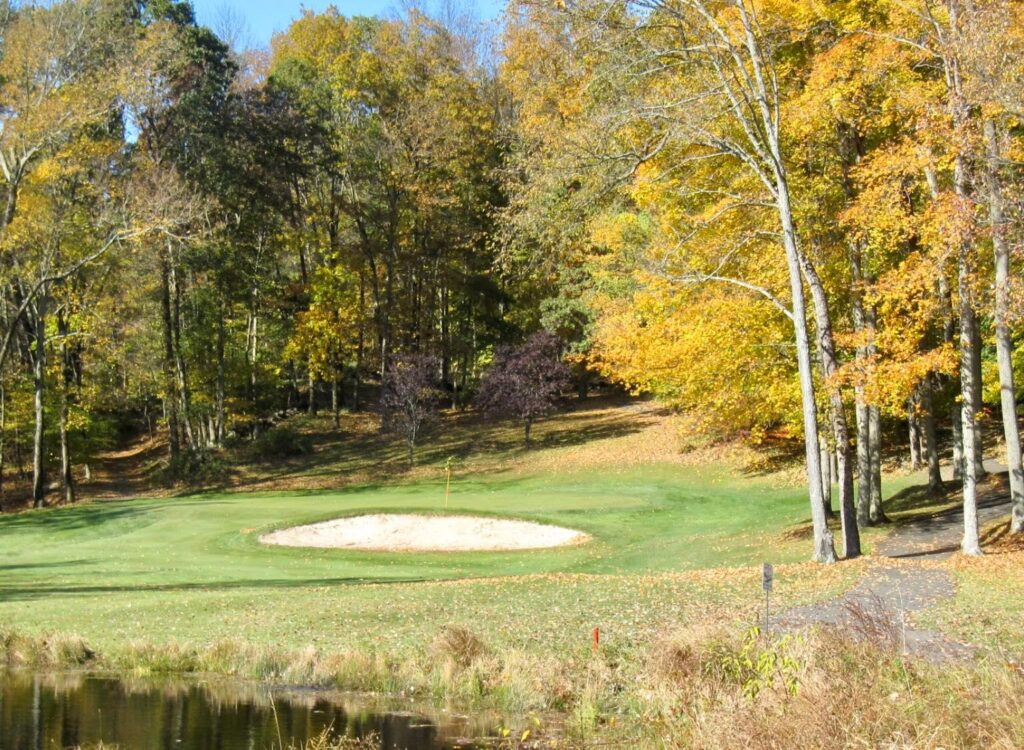Text by Henrylito D. Tacio
Photos: Wikipedia
“Green deserts” – that’s how ecologists call those golf courses. Though they seem harmless, the manicured lawns of golf courses can be hazardous to one’s health, according to a Washington-based think-tank.
“To give the grass its bright green hue, golf course superintendents apply fertilizer and pesticide,” stressed Worldwatch Institute in its report. “When mixed together and applied to a large area, such as a golf course, fertilizer and pesticide pose threats to the environment and human health.”
Quoting the US-based Journal of Pesticide Reform, the institute said that 750 kilograms of pesticides are sprayed on a typical golf course annually. This averages 11 kilograms per hectare.
“Some golf courses (around the world) are now paying more attention to figuring out why the grass is turning brown than trying to keep the grass a perfect green year-round with chemicals,” the institute said.
For most parts, though, heavy fertilizer and pesticide use continues to soar.
A survey of 52 golf courses in Long Island in 1990 by the New York State Department of Law showed that the average application rate was about seven times the amount of pesticides applied to agricultural land each year, which averages 1.2 kilograms.
Tourism Concern, a non-governmental organization based in the United Kingdom, estimates that in developing countries like the Philippines, an average golf course needs 1,500 kilograms of chemical fertilizers, pesticides, and herbicides annually.
In the 1950s and 1960s, American golf course superintendents sprayed arsenic and mercury – both highly toxic chemicals – to maintain the brilliant green color of the grass.
Pesticides are chemical substances designed to be toxic to organisms that affect plants’ growth, such as fungi, insects, or weeds. While they can wipe out the insects, they also unknowingly kill predators.
“The pesticides and herbicides (used in golf courses) seep into the ground, poisoning any life that lies beneath the topsoil,” wrote Menchu Aquino Sarmiento, a trustee of iHome-Greater Metro Manila, a nonprofit, socialized housing ministry for the poor.

Beautiful golf course 
Another golf course
The Pesticide Action Network agrees. “(Pesticides generate) many externalities as they cause the death of many wildlife species including mammals, earthworms and bees,” it says.
Pesticides have serious human health effects, too.
In 1983, American Navy Lt. George Prior, a healthy 30-year-old, was playing golf at the Arlington Army and Navy Country Club near Washington, D.C. After his round, he complained of headaches, fever, and nausea.
Within three days, his skin was covered with a severe rash, and blisters hung from his back and arms. He developed pneumonia, his kidneys failed, and he fell into a coma and died just 20 days after the game. His autopsy revealed that he suffered a lethal allergic reaction to chlorothalonil, one of the most common pesticides used in golf courses.
A survey by Japanese doctors in 1991 showed that of some 500 patients “with unsuspected poisoning from agricultural chemicals, 125 were associated with golf courses; 97 were employees.”
Symptoms included skin rashes, respiratory illnesses, asthma, allergic rhinitis, disorders of the eye, ear, and throat, and damage to the central nervous system.
Golf courses also use a lot of water.
“Water is one of the biggest costs to golf courses,” states the website, twl.irrigation.com. Those lawns, tees, fairways, and rough areas need water to make them look green at all times.
“Depending on the location of the golf course and the climate, an 18-hole course can use on average 2.08 billion gallons of water per day,” the website claims.
Now, going back to chemicals. There is also evidence to suggest that golf courses cause water pollution.
“All chemicals applied to keep the golf lawns smooth and velvety get washed down into the water table, as well as into irrigation systems, rivers and the sea in the case of coastal resorts,” wrote Clare Pedrick in an article which appeared in the defunct UN-publication, Ceres.
The chemicals pollute not only waterways but also the air, according to the institute. Up to 90 percent of the chemicals sprayed on a course end up in the air.
Studies done in countries where golf courses abound showed that golfers, caddies, and local residents are most likely to suffer skin irritations and other allergic reactions related to chemical use.
When he was still alive, Dr. Juan Flavier – who was then a senator – said that some golf courses in the country were using a chemical that has been found by scientists to be “50 times more effective at destroying ozone than chlorine from chlorofluorocarbons.”
Golf courses occupy huge lands. In the United States, for instance, “the amount of land being used for golf courses is about two million acres,” Bloomberg reports. That is larger in size than the state of Delaware but smaller than Connecticut.
In the Philippines, at least 50 hectares of contiguous land are needed to build an 18-hole golf course.
The British railways workers reportedly introduced the game of golf to the Filipinos during the last years of the Spanish occupation.

